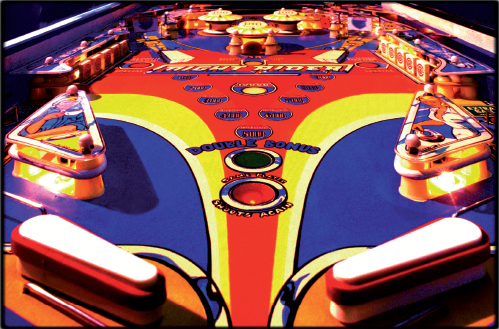Mechanical Gaming
Printed Page 293
In the 1880s, the seeds of the modern entertainment industry were planted by a series of coin-operated contraptions devoted to cashing in on idleness. First appearing in train depots, hotel lobbies, bars, and restaurants, these leisure machines (also called "counter machines") would find a permanent home in the first thoroughly modern indoor playground: the penny arcade.3
Arcades were like nurseries for fledgling forms of amusement that would mature into mass entertainment industries during the twentieth century. They offered fun even as they began shaping future media technology. For example, automated phonographs used in arcade machines evolved into the jukebox, while the kinetoscope (see Chapter 7) set the stage for the coming wonders of the movies. But the machines most relevant to today's electronic gaming were more interactive and primitive than the phonograph and kinetoscope. Some were strength testers that dared young men to show off their muscles by punching a boxing bag or arm-wrestling a robot-like Uncle Sam. Others required more refined skills and sustained play, such as those that simulated bowling, horse racing, and football.4

Another arcade game, the bagatelle, spawned the pinball machine, the most prominent of the mechanical games. In pinball, players score points by manipulating the path of a metal ball on a playfield in a glass-covered case. In the 1930s and 1940s, players could control only the launch of the ball. For this reason, pinball was considered a sinister game of chance that, like the slot machine, fed the coffers of the gambling underworld. As a result, pinball was banned in most American cities, including New York, Chicago, and Los Angeles.5 However, pinball gained mainstream acceptance and popularity after World War II with the addition of the flipper bumper, which enables players to careen the ball back up the play table. This innovation transformed pinball into a challenging game of skill, touch, and timing-all of which would become vital abilities for video game players years later.